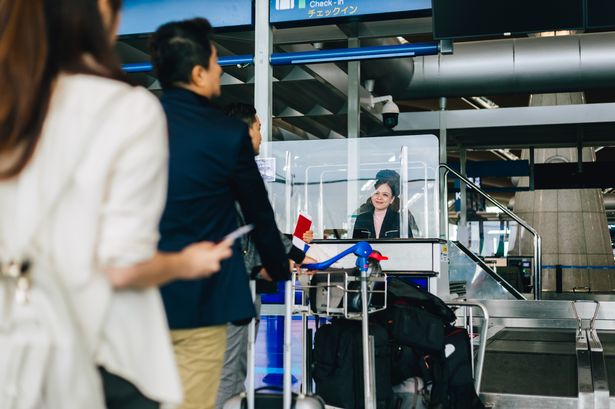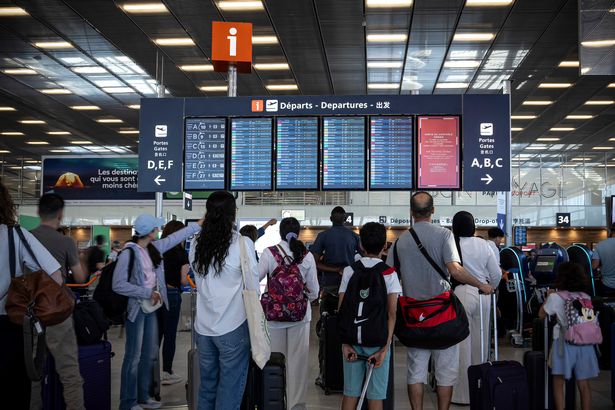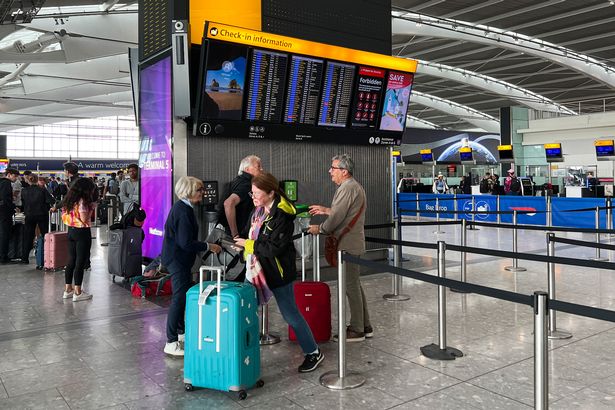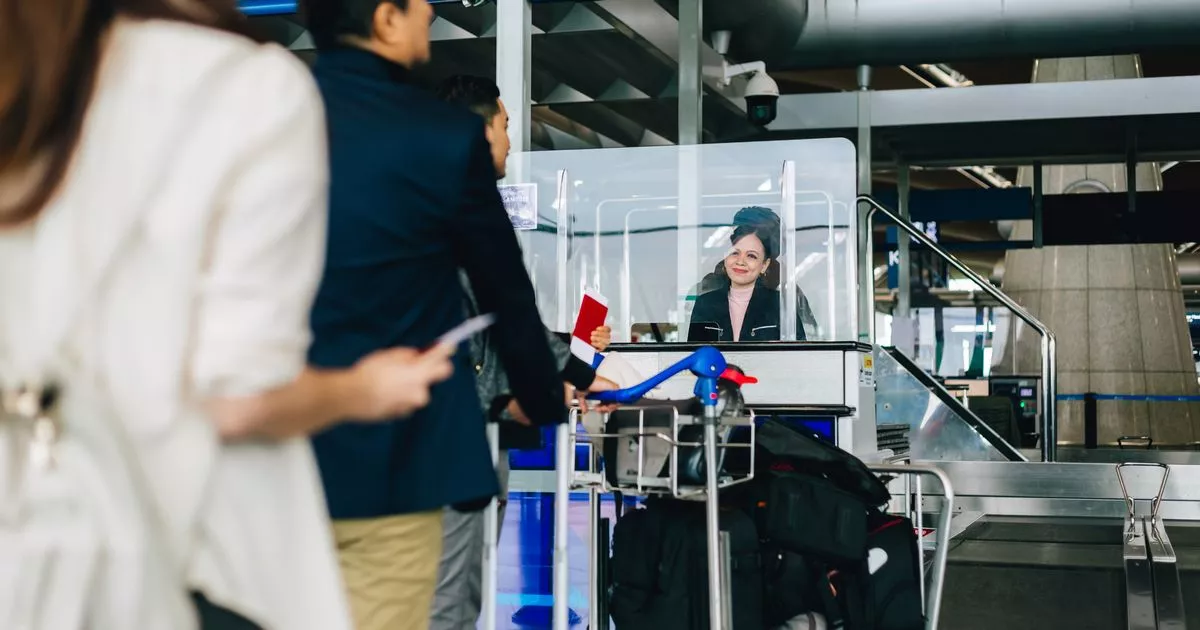A major EU border change is coming from October 12. Here’s how UK travellers will be affected Brits will have to get used to a new entry and exit system for EU countries(Image: Getty Images)
Brits will have to get used to a new entry and exit system for EU countries(Image: Getty Images)
Brits travelling to 29 countries in Europe will face strict new border rules that will come into force within weeks.
The new European Union (EU) Entry/Exit System (EES) is set to be launched on October 12 this year, where UK travellers will get their fingerprints and photo taken when first entering or leaving the Schengen area.
Passengers will have biometric data collected at the Schengen border to boost security and ensure they do not overstay the 90-day limit in any 180-day period.
Travellers will also be asked a series of questions to check they have proof of accommodation, sufficient funds for the trip, medical insurance and a return or onward ticket, reports The Times.
The Foreign Office has also warned that passengers could expect longer waiting times at the border once the system is rolled out.
It said: “EES may take each passenger a few extra minutes to complete so be prepared to wait longer than usual at the border once the system starts.”
The EES will be an automated IT system for UK travellers each time they cross an EU external border. It is set to replace the current system of manually stamping passports upon arrival in the EU.
 Brits travelling to Europe will face a major change (Image: AP)When does EES launch?
Brits travelling to Europe will face a major change (Image: AP)When does EES launch?
The EU will begin the introduction of its new EES on October 12, gradually increasing the number of checkpoints until April next year.
It has said this system will be implemented gradually, which means not all travellers will have their data collected. It added that the “phased implementation will last until 9 April 2026.”
What are the new entry requirements?
The Foreign Office announced on July 31 that, from October 12, those travelling into and out of the Schengen area for short stays may need to:
- Have their fingerprints and photo taken
- Answer the Schengen Border Code questions
For those entering the Schengen area through the Port of Dover, Eurotunnel at Folkestone or St Pancras International, this information will be taken at the border before leaving the UK, it says.
Travellers may also need to provide either their fingerprint or photo when they leave the Schengen area.
What are the questions?
The Schengen Border Code questions could involve showing proof of accommodation, sufficient funds for the trip, medical insurance and a return or onward ticket.
 The new EES will be introduced before October half term(Image: AP)
The new EES will be introduced before October half term(Image: AP)
Border officials can request more information if they suspect you cannot support your trip.
Is a return ticket essential?
Those without onward or return plans will not be denied entry at the border, but border officials may ask for more information about your travel plans.
If travellers have no record of overstaying, it is likely that border officials will assume you will not breach the 90 days in 180 rule.
Full list of countries affected by new EES
- Austria
- Belgium
- Bulgaria
- Croatia
- Czech Republic
- Denmark
- Estonia
- Finland
- France
- Germany
- Greece
- Hungary
- Iceland
- Italy
- Latvia
- Liechtenstein
- Lithuania
- Luxembourg
- Malta
- Netherlands
- Norway
- Poland
- Portugal
- Romania
- Slovakia
- Slovenia
- Spain
- Sweden
- Switzerland
